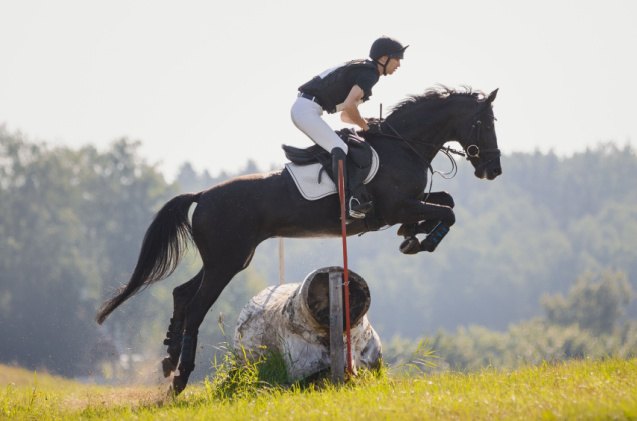Horse Training 101

We all know the amazing feats and tasks that horses are capable of achieving. These are smart and powerful animals, and they excel in athletic feats like racing and obstacle courses, but also for casual riding, special work tasks, and even police work. The tasks that a horse can complete are many but they all require one thing: training. Training a horse can be either easy, or challenging – there are many contributing factors, such as the age of the horse, your level of patience, and the temperament of the animal. But even so, there are certain tips and steps that everyone can follow in an attempt to train a horse. Here are the basics of horse training that can help simplify the process, even if you are a complete beginner!
Before you begin horse training there is the first rule you need to know – the horse you train should be your friend. You need to bond and make sure that the horse feels at ease and comfortable in your company, as that will make training much easier and simpler. A horse needs to trust you, see you as a friend, and feel safe when you are around. Without these things, they might fear you or shun you, which can make day-to-day activities quite challenging – let alone training. Once you are certain that you have a special bond with your equine friend, you can go on with the training process. The best way for creating a strong bond is to spend some time with your horse, outside of work, riding, and feeding. Take some time to understand them, their movements and behaviors, their quirks, and the way they behave. Create some positive associations with rewards and treats, so the horse will be glad to see you.
When starting training, begin with the basics. No saddling up or riding: that’s for later. First, you need to start training on the ground. This is a great foundation for future steps. One of the logical first steps of training is to master “standing still”. A horse needs to know to stand still in one place, with you holding the reins. This is the simplest step: all you have to do is stand still and keep the reins slack. If your horse moves, you need to make them back up. This way they’ll understand that moving off from the given spot is not right.
Next up is simple walking, better known as leading. Your horse needs to walk beside you, roughly at your elbow, and match your pace – with you holding the reins all the while. They can’t be either too slow, slacking behind, or too eager, going in front of you. In the former case, encourage them to stay at your elbow; in the latter case, stop them and make them move back. If necessary, start over, until they get it right.
Flexing of the neck comes next. This is the action of the horse moving its head to the left or right, which prepares them for the pressure applied by the reins. Stand at the horse’s side and apply gentle pressure on the reins, so that they know instinctively to flex their head. There shouldn’t be too much pressure on the reins, so make sure that the horse dips its head all the way for the correct performance. Once they get it right on both sides, reward them. Positive reinforcement is an important aspect of training and guarantees quick results.
Another great beginner exercise – once the previous steps have been mastered – is longeing. Longeing is one of the most common horse training exercises and has been around for ages. The gist of this exercise is walking in circles. It’s much like a spoked wheel: you are the hub, and the horse is the outer wheel. For this exercise, you will need a “longe line”, or a long lead rope, and a light whip in the other hand. Gently urge your horse to move in circles with the help of the whip, all the while moving in the same direction. As you complete the circles, practice changing the whip and longe line from hand to hand. For starters, begin with small steps and tiny circles, and work your way up. This exercise is a great choice for conditioning, coordination, and rehabilitation.
Once you and your horse master these first basic steps of training, you can think of the bigger, future steps. Next up should be saddle and bit conditioning, especially if the horse is young and never had a rider before. But before all that happens, you will have to know that horse training is a professional job. It can take months and more to train a horse on a basic level, and horse training requires years and years of practice, and can still be a challenge even for professionals. If you had no previous experience with horses, or are uncertain of your horse’s character, keep in mind that the challenge might be too great.

A proud mama to seven dogs and ten cats, Angela spends her days writing for her fellow pet parents and pampering her furballs, all of whom are rescues. When she's not gushing over her adorable cats or playing with her dogs, she can be found curled up with a good fantasy book.
More by Angela Vuckovic























